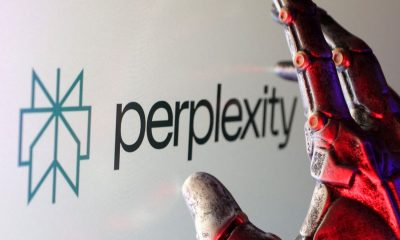

Metaverse
How artificial intelligence will affect the elections of 2024 – Crypto News
Politics is SUPPOSED to be about persuasion; but it has always been stalked by propaganda. Campaigners dissemble, exaggerate and fib. They transmit lies, ranging from bald-faced to white, through whatever means are available. Anti-vaccine conspiracies were once propagated through pamphlets instead of podcasts. A century before covid-19, anti-maskers in the era of Spanish flu waged a disinformation campaign. They sent fake messages from the surgeon-general via telegram (the wires, not the smartphone app). Because people are not angels, elections have never been free from falsehoods and mistaken beliefs.
But as the world contemplates a series of votes in 2024, something new is causing a lot of worry. In the past, disinformation has always been created by humans. Advances in generative artificial intelligence (AI)—with models that can spit out sophisticated essays and create realistic images from text prompts—make synthetic propaganda possible. The fear is that disinformation campaigns may be supercharged in 2024, just as countries with a collective population of some 4bn—including America, Britain, India, Indonesia, Mexico and Taiwan—prepare to vote. How worried should their citizens be?
It is important to be precise about what generative-AI tools like ChatGPT do and do not change. Before they came along, disinformation was already a problem in democracies. The corrosive idea that America’s presidential election in 2020 was rigged brought rioters to the Capitol on January 6th—but it was spread by Donald Trump, Republican elites and conservative mass-media outlets using conventional means. Activists for the BJP in India spread rumours via WhatsApp threads. Propagandists for the Chinese Communist Party transmit talking points to Taiwan through seemingly legitimate news outfits. All of this is done without using generative-AI tools.
What could large-language models change in 2024? One thing is the quantity of disinformation: if the volume of nonsense were multiplied by 1,000 or 100,000, it might persuade people to vote differently. A second concerns quality. Hyper-realistic deepfakes could sway voters before false audio, photos and videos could be debunked. A third is microtargeting. With ai, voters may be inundated with highly personalised propaganda at scale. Networks of propaganda bots could be made harder to detect than existing disinformation efforts are. Voters’ trust in their fellow citizens, which in America has been declining for decades, may well suffer as people began to doubt everything.
This is worrying, but there are reasons to believe AI is not about to wreck humanity’s 2,500-year-old experiment with democracy. Many people think that others are more gullible than they themselves are. In fact, voters are hard to persuade, especially on salient political issues such as whom they want to be president. (Ask yourself what deepfake would change your choice between Joe Biden and Mr Trump.) The multi-billion-dollar campaign industry in America that uses humans to persuade voters can generate only minute changes in their behaviour.
Tools to produce believable fake images and text have existed for decades. Although generative AI might be a labour-saving technology for internet troll farms, it is not clear that effort was the binding constraint in the production of disinformation. New image-generation algorithms are impressive, but without tuning and human judgment they are still prone to produce pictures of people with six fingers on each hand, making the possibility of personalised deepfakes remote for the time being. Even if these AI-augmented tactics were to prove effective, they would soon be adopted by many interested parties: the cumulative effect of these influence operations would be to make social networks even more cacophonous and unusable. It is hard to prove that mistrust translates into a systematic advantage for one party over the other.
Social-media platforms, where misinformation spreads, and AI firms say they are focused on the risks. OpenAI, the company behind ChatGPT, says it will monitor usage to try to detect political-influence operations. Big-tech platforms, criticised both for propagating disinformation in the 2016 election and taking down too much in 2020, have become better at identifying suspicious accounts (though they have become loth to arbitrate the truthfulness of content generated by real people). Alphabet and Meta ban the use of manipulated media in political advertising and say they are quick to respond to deepfakes. Other companies are trying to craft a technological standard establishing the provenance of real images and videos.
Voluntary regulation has limits, however, and the involuntary sort poses risks. Open-source models, like Meta’s Llama, which generates text, and Stable Diffusion, which makes images, can be used without oversight. And not all platforms are created equal—TikTok, the video-sharing social-media company, has ties to China’s government, and the app is designed to promote virality from any source, including new accounts. Twitter (which is now called X) cut its oversight team after it was bought by Elon Musk, and the platform is a haven for bots. The agency regulating elections in America is considering a disclosure requirement for campaigns using synthetically generated images. This is sensible, though malicious actors will not comply with it. Some in America are calling for a Chinese-style system of extreme regulation. There, AI algorithms must be registered with a government body and somehow embody core socialist values. Such heavy-handed control would erode the advantage America has in AI innovation.
Politics was never pure
Technological determinism, which pins all the foibles of people on the tools they use, is tempting. But it is also wrong. Although it is important to be mindful of the potential of generative AI to disrupt democracies, panic is unwarranted. Before the technological advances of the past two years, people were quite capable of transmitting all manner of destructive and terrible ideas to one another. The American presidential campaign of 2024 will be marred by disinformation about the rule of law and the integrity of elections. But its progenitor will not be something newfangled like ChatGPT. It will be Mr Trump.
©️ 2023, The Economist Newspaper Limited. All rights reserved.
From The Economist, published under licence. The original content can be found on www.economist.com
-

 Blockchain1 week ago
Blockchain1 week agoAfrica Countries Pass Crypto Laws to Attract Industry – Crypto News
-
Cryptocurrency1 week ago
XRP News: Ripple Unveils ‘Ripple Prime’ After Closing $1.25B Hidden Road Deal – Crypto News
-

 Cryptocurrency1 week ago
Cryptocurrency1 week agoDOGE to $0.33 in Sight? Dogecoin Must Defend This Key Level First – Crypto News
-
others1 week ago
JPY soft and underperforming G10 in quiet trade – Scotiabank – Crypto News
-

 Blockchain1 week ago
Blockchain1 week agoXRP Price Gains Traction — Buyers Pile In Ahead Of Key Technical Breakout – Crypto News
-

 Blockchain1 week ago
Blockchain1 week agoISM Data Hints Bitcoin Cycle Could Last Longer Than Usual – Crypto News
-
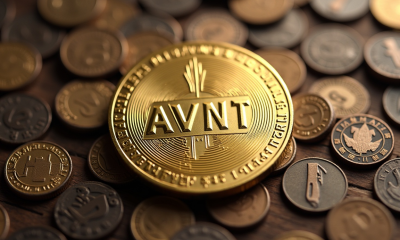
 Cryptocurrency1 week ago
Cryptocurrency1 week agoWhat next for Avantis price after the 73% recovery? – Crypto News
-

 Technology1 week ago
Technology1 week agoNothing OS 4.0 Beta introduces pre-installed apps to Phone (3a) series: Co-founder Akis Evangelidis explains the update – Crypto News
-

 Technology5 days ago
Technology5 days agoSam Altman says OpenAI is developing a ‘legitimate AI researcher’ by 2028 that can discover new science on its own – Crypto News
-

 Cryptocurrency1 week ago
Cryptocurrency1 week agoTrump plans to pick Michael Selig to lead CFTC: Report – Crypto News
-

 Blockchain1 week ago
Blockchain1 week agoEthereum Rebounds From Bull Market Support: Can It Conquer The ‘Golden Pocket’ Next? – Crypto News
-

 De-fi1 week ago
De-fi1 week agoNearly Half of US Retail Crypto Holders Haven’t Earned Yield: MoreMarkets – Crypto News
-

 Cryptocurrency1 week ago
Cryptocurrency1 week agoBitcoin’s institutional surge widens trillion-dollar gap with altcoins – Crypto News
-

 Technology1 week ago
Technology1 week agoUniswap Foundation (UNI) awards Brevis $9M grant to accelerate V4 adoption – Crypto News
-

 Blockchain1 week ago
Blockchain1 week agoBinance Stablecoin Outflow On A Steady Rise — What This Means For The Market – Crypto News
-
others1 week ago
Indian Court Declares XRP as Property in WazirX Hack Case – Crypto News
-

 Cryptocurrency1 week ago
Cryptocurrency1 week agoWestern Union eyes stablecoin rails in pursuit of a ‘super app’ vision – Crypto News
-

 Technology1 week ago
Technology1 week agoFrom Studio smoke to golden hour: How to create stunning AI portraits with Google Gemini – 16 viral prompts – Crypto News
-
Business1 week ago
PEPE Coin Price Prediction as Weekly Outflows Hit $17M – Is Rebound Ahead? – Crypto News
-

 Cryptocurrency1 week ago
Cryptocurrency1 week agoHYPE Breaks Out After Robinhood Listing and S-1 Filing: What’s Next? – Crypto News
-

 De-fi1 week ago
De-fi1 week agoHYPE Jumps 10% as Robinhood Announces Spot Listing – Crypto News
-
others1 week ago
Platinum price recovers from setback – Commerzbank – Crypto News
-
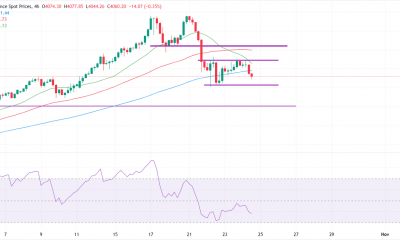
 others1 week ago
others1 week agoGold trims losses after softer US inflation reinforces dovish Fed outlook – Crypto News
-
Business1 week ago
White House Crypto Czar Backs Michael Selig as ‘Excellent Choice’ To Lead CFTC – Crypto News
-
others1 week ago
Bitcoin Price Eyes $120K Ahead of FED’s 98.3% Likelihood to Cut Rates – Crypto News
-
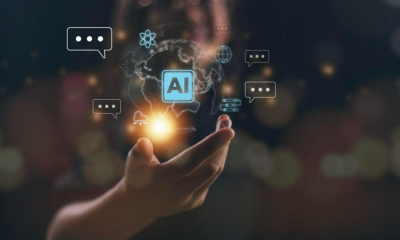
 Technology1 week ago
Technology1 week agoMint Explainer | India’s draft AI rules and how they could affect creators, social media platforms – Crypto News
-
others1 week ago
GBP/USD holds steady after UK data, US inflation fuels rate cut bets – Crypto News
-

 Blockchain1 week ago
Blockchain1 week agoXRP/BTC Retests 6-Year Breakout Trendline, Analyst Calls For Decoupling – Crypto News
-

 Cryptocurrency1 week ago
Cryptocurrency1 week agoUSDJPY Forecast: The Dollar’s Winning Streak Why New Highs Could Be At Hand – Crypto News
-
others1 week ago
Is Changpeng “CZ” Zhao Returning To Binance? Probably Not – Crypto News
-
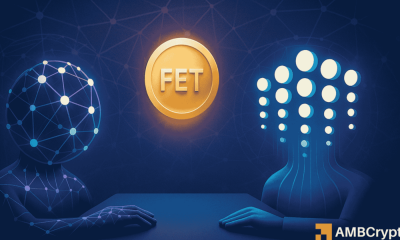
 Cryptocurrency1 week ago
Cryptocurrency1 week agoFetch.ai and Ocean Protocol move toward resolving $120M FET dispute – Crypto News
-
Technology1 week ago
Can Hype Price Hit $50 After Robinhood Listing? – Crypto News
-
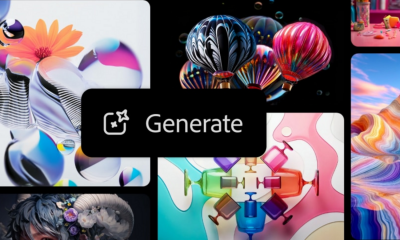
 Technology1 week ago
Technology1 week agoOpenAI announces major Sora update: Editing, trending cameos, and Android launch on the way – Crypto News
-

 Metaverse1 week ago
Metaverse1 week agoGemini in Gmail automates meeting schedules effortlessly – Crypto News
-

 Blockchain1 week ago
Blockchain1 week agoEntire Startup Lifecycle to Move Onchain – Crypto News
-

 Cryptocurrency1 week ago
Cryptocurrency1 week agoNEAR’s inflation reduction vote fails pass threshold, but it may still be implemented – Crypto News
-
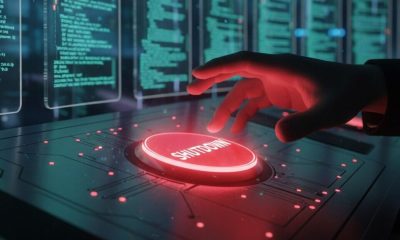
 Technology1 week ago
Technology1 week agoSurvival instinct? New study says some leading AI models won’t let themselves be shut down – Crypto News
-
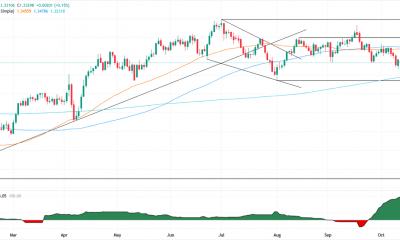
 others7 days ago
others7 days agoGBP/USD floats around 1.3320 as softer US CPI reinforces Fed cut bets – Crypto News
-

 Cryptocurrency6 days ago
Cryptocurrency6 days agoCitigroup and Coinbase partner to expand digital-asset payment capabilities – Crypto News
-

 Cryptocurrency5 days ago
Cryptocurrency5 days agoInside Bitwise’s milestone solana ETF launch – Crypto News
-
others1 week ago
Silver consolidates below $49 amid Fed rate-cut bets – Crypto News
-
Business1 week ago
HBAR Price Targets 50% Jump as Hedera Unleashes Massive Staking Move – Crypto News
-

 others1 week ago
others1 week agoEUR/USD hovers at 1.1600 as muted CPI data fails to alter Fed stance – Crypto News
-
Business1 week ago
Trump Picks SEC Crypto Counsel Michael Selig to Lead CFTC Amid Crypto Oversight Push – Crypto News
-

 Blockchain1 week ago
Blockchain1 week agoPump.Fun Rallies 10% After Acquisition Of Trading Terminal Padre – Crypto News
-
Technology1 week ago
Analyst Eyes Key Support Retest Before a Rebound for Ethereum Price Amid $93M ETF Outflows and BlackRock Dump – Crypto News
-
Business1 week ago
Ripple Explores New XRP Use Cases as Brad Garlinghouse Reaffirms Token’s ‘Central’ Role – Crypto News
-
others1 week ago
Tether’s Stablecoin 1.0 Era Is Over – Now the Industry Needs 2.0 – Crypto News
-

 De-fi1 week ago
De-fi1 week agoAave Labs Acquires Stable Finance to Expand DeFi Access – Crypto News
-

 Blockchain1 week ago
Blockchain1 week agoKyrgyzstan Launches Stablecoin While Confirming Future CBDC – Crypto News







